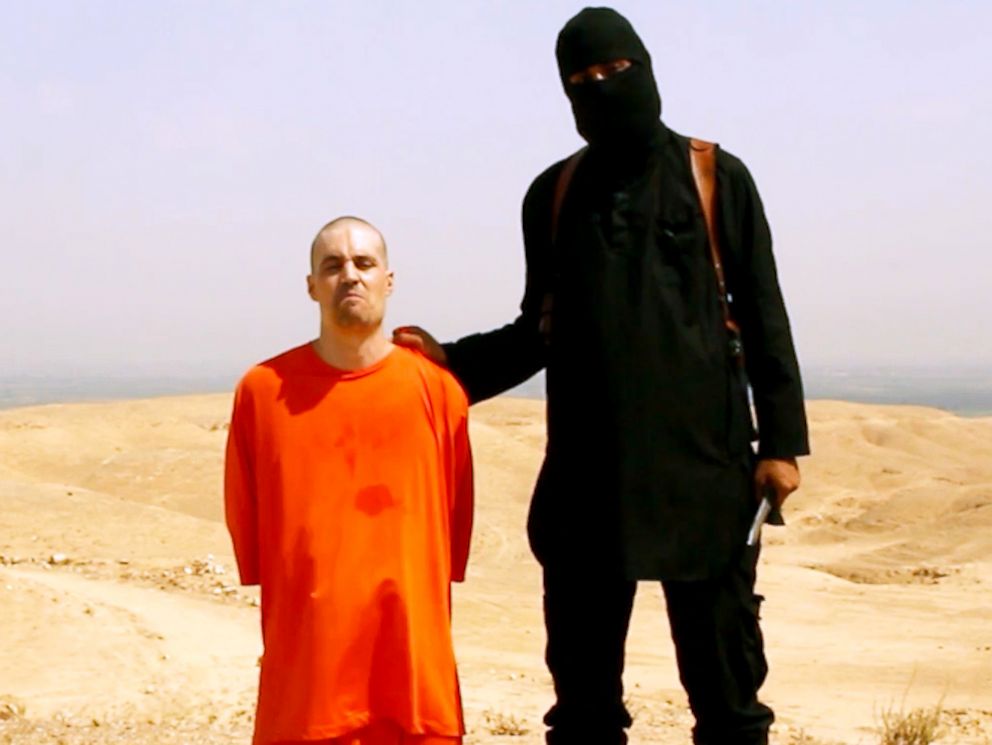From Bang to Whimper, ISIS Propaganda Withers Under US Strikes
Terror group lowers volume of grim messages, but officials suspect more to come.
— -- As explosions erupted from airstrikes in Iraq and Syria over the past 12 days in the U.S.-led military campaign against terrorists there, the sounds of silence from jihadi propagandists also have intensified.
No major Islamic State of Iraq and Syria (ISIS) video threatening the West or speech by any ISIS leader has been posted online since Sept. 21, with the exception of the latest multi-part installment of "programs" by British hostage John Cantlie, which many sources believe were made prior to the strikes that began the night of Sept. 22.
While ISIS ground forces continue to menace cities and are reportedly advancing on the Kurdish-held town of Kobane on the Syria-Turkey border, the sophisticated and prolific ISIS propaganda machine -- exceptionally skilled at "information operations," according to western intelligence operatives -- has limped along since missiles fired by ships, drones and fighter jets have rained down each night on their positions.
Digital Feature: What Is ISIS?
Where Americans Stand on Airstrikes
Islamic State Militants Attack Small Iraq Town
Its usual stock in trade of videotaped mass executions and pillaging has slowed to a trickle of locally-generated videos showing jihadi fighters promising hell to American warplanes and shopkeepers on bustling Syrian streets griping about bomb damage. One recent video showed a purported ISIS fighter, an English speaker, walking through the rubble of an airstrike.
The other target of the American air campaign is a small but purportedly elite al Qaeda cell in Syria, known to U.S. intelligence as the "Khorasan Group" -- seasoned jihadis who fought together in Afghanistan and Pakistan who are being sheltered by al Qaeda's official Syrian affiliate Jabhat al-Nusra. The Khorasan Group was secretly developing non-metallic bombs to smuggle aboard commercial passenger jets in the West, officials have said, and produced few if any public statements while on Syria since 2011.
It is unclear whether ISIS has suffered losses in its media operation or purposely gone quiet since it released the hour-long pseudo-documentary "Flames Of War" several days before the U.S. stepped up airstrikes. That Sept. 19 video charted ISIS's own version of its meteoric rise from insurgency on the ropes in Iraq three years ago to blitzing eastern Syria and northern Iraq over the summer and declaring an Islamic caliphate.
The last message from an ISIS leader was an audio speech by the group's spokesman, Abu Muhammad al-Adnani the day before the massive U.S. military onslaught began, in which he urged Muslims to kill Americans and Europeans "in any manner or way."
A new significant ISIS message or video could come at any moment, and some officials said they anticipate more soon, including possibly another hostage beheading like that of two American journalists and a British aid worker since August.

Whether the U.S. succeeded in temporarily disrupting ISIS communications or the group has become quiet publicly in order to maintain security, the relative silence of the past 12 days "may rob them of their momentum or the appearance of momentum," J.M. Berger, co-author of the forthcoming "ISIS: State of Terror," told ABC News.
Berger and others who monitor ISIS social media told ABC News that Twitter suspended more than 1,000 suspect accounts linked to the group during September, including at least 100 foreign fighters.
"A heavy concentration of English speakers got hit," he said, adding that another 400 ISIS-tied accounts were shut down Tuesday.
"We review all reported accounts against our rules, which prohibit unlawful use and violent threats," a Twitter spokesperson, who did not wish to use their name, told ABC News in an email on Thursday about the suspensions.



